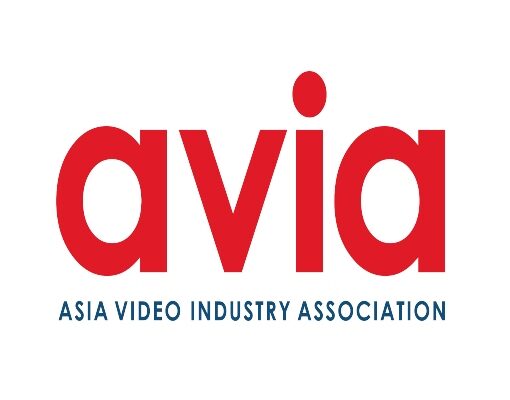SINGAPORE – On June 6, the Asia Video Industry Association (AVIA) annual satellite conference, the Satellite Industry Forum, welcomed over 140 delegates and speakers including some of the satellite industry’s largest operators for a day of discussion on the challenges and growth opportunities of the satellite connectivity market valued at $11.2 billion in 2021, and projected to reach $22.1 billion by 2031.
The conference opened with the regional operators on how they would fit in the rapidly evolving world of satellite. Raymond Chow, recently appointed as Chief Commercial Officer, AsiaSat, provided an overview of AsiaSat’s business strategies and emphasized the importance to focus and improve AsiaSat’s video business to deliver content to the big screen and small screen. He also opined that customers understand that quality of service can be more important than a small difference in pricing. Being the first private satellite operator company in Indonesia with over 330Gbps capacity across 3 satellites for Indonesia, Malaysia and Philippines, Agus Budi Tjahjono, Director of Commercial, PSN, is optimistic that PSN will become the biggest satellite capacity provider in the ASEAN region by the end of 2023. Besides sharing his optimism on the growth for demand for satellite communication, Yutaka Moriai, Executive Officer, Group President – Global Business Group, Space Business Unit, SKY Perfect JSAT, also foresees great opportunities in building highly integrated space network for both innovative communication and data collection, with plans to invest up to YEN150b (US$1.1b) by 2030. Besides looking into the new domain of highly integrated space network, SKY Perfect JSAT is also poised for an aggressive push into Earth Observation Space. Patompob (Nile) Suwansiri, CEO, Thaicom, shared similar optimism in the Earth Observation Space and GEO special intelligence arena, especially in their home market. Thaicom is also expecting their first commercial partnership in LEO satellite IOT business in Thailand with Globalstar in the coming months.
While there is a trend from Satellite to Cloud, the role of satellite in video distribution is still a growing business, and to achieve this, Sanjay Duda, CEO, Planetcast Media Services, highlighted the need for satellite companies to evolve their business to support the business plan of the video players. Echoing similar sentiments, Alistair Roseburgh, Director, Operations APAC, A+E Networks Asia, noted that satellite remains the choice of delivery for their core pay TV business. Diversification and experimentation in businesses is also more common compared to the past. While FAST (Free Ad-Supported TV) has not yet gained much traction in Asia, Rajeev Gambhir, Senior Director (Technology & Policy), SatCom Industry Association, asked fellow panelists about their predictions and what more needs to be done. Alistair highlighted the need for more flexibility such as the pay as you go model which is commonly used by cloud services and the ability to launch and discontinue a service quickly depending on its popularity. While Sanjay stressed on the need for integration with other technologies to deliver seamless connectivity to the consumer.
Building on the optimism on the future of the satellite industry, Cyril Dujardin, General Manager, Connectivity Business Unit, Eutelsat, shared the firm’s commitment to building a stronger presence in the connectivity business – mainly their decision to invest in Oneweb. In the same panel hosted by David Bruner, CEO and Principal Consultant, Aviation Communications Advisors (ACA), Mark Rigolle, COO, Rivada Space Networks, shared that the design and market segment for Rivada remains largely similar with LeoSat, except that there is greater market acceptance compared to the past and that their focus on funding is now from telco investors.
In the Philippines where many areas are still unserved or underserved, the general sentiment from operators is that satellite technology will be a game changer. Quoting examples from the major presence and growth of ABS in Philippines, from the first acquisition of Mabuhay Satellite in 2009 to currently having five in-orbit satellites, Vincent Lim, MD, Asia Sales, ABS, pointed out that satellite technology remains as the main form of connectivity in Philippines although consumer broadband is starting to pick up. Agreeing, Brandon Seir, Chief Commercial Officer, Kacific Broadband Satellites, also noted the high cost of routing fibre, the only way to reach out to those places would be through satellite. Ganendra Selvaraj, Chief Commercial Officer, MEASAT, emphasized MEASAT’s commitment for digital inclusion, to provide opportunities to people and improve affordability through the community Wi-Fi model which has proven to be successful in Malaysia. General sentiment from the panel was that the Philippines market presents huge opportunity, but more regional cooperation is needed.
From a service provider’s perspective, Alan Cheng, Sales Manager, Pacific, SES, disagreed that there is an oversupply in the market and highlighted the desire for more capacity in the pacific region, drawing attention on the vast market that is not yet connected. Mahdi Nazari Mehrabi, CTIO, Northtelecom, noted that although GSO operators might see LEO as a threat, which all three GSO operators denied in unison, it could be an opportunity and quoted Starlink as an example, and stressed the importance of great marketing to put traditional satellite industry for general consumers. Beatrice Mok, Corporate Development Director, Kacific Broadband Satellites, added that it’s a fallacy that no contract and low pricing is unique to LEO and cautioned about the attractive pricing from new entrants trying to capture market share and that regulators also have a part to play in preventing predatory pricing in the satellite industry. Expanding on the point of why GSO operators do not see LEO as a threat, Robert Suber, Director, Asia Pacific Sales, Intelsat, highlighted that, it’s telco and mobile network operators across the pacific which are worried that OTT and connectivity players bypassing their network and eroding revenues.
Wrapping up the conference, female leaders took the stage to discuss how to tackle the challenges in the industry and in particular, the lack of women in leadership roles. In the panel moderated by Irina Petrov, VP MarCom & Membership at GSOA, Jacinth Lau, Deputy Director (Industry), Office for Space Technology & Industry (OSTIn), pointed to the lack of awareness of career opportunities amongst the younger generation, the lack of space technology degrees and courses at local tertiary institutions and the difficulties in securing talents due to global competition. Nevertheless, she was optimistic about Singapore’s focused efforts in investments of research around Singapore’s core strengths as an aviation and maritime hub and collaboration with universities and research institutes. CTO of Boeing Satellite, Rachelle Radpour elaborated not just on the need for diversity in the space industry, but it is also critical to ensure equal access to opportunities, work life balance, keeping a pipeline and culture which supports all stages of an employee’s career, regardless of their gender. Despina Panayiotou Theodosiou, Co-CEO, TOTOTHEO MARITIME, highlighted the importance of having a role model for young women while also stressing the need for fresh ideas, patience and persistence to make changes.
The Satellite Industry Forum is proudly sponsored by AsiaSat, Eutelsat, Gilat, Hughes, Integrasys, Intelsat, Kacific Broadband Satellites, Marsh, Milbank, Northtelecom, SES, SKY Perfect JSAT, SpaceLogistics and Thaicom.
About the Asia Video Industry Association
The Asia Video Industry Association (AVIA) is the trade association for the video industry and ecosystem in Asia Pacific. It serves to make the video industry stronger and healthier through promoting the common interests of its members. AVIA is the interlocutor for the industry with governments across the region, leads the fight against video piracy through its Coalition Against Piracy (CAP) and provides insight into the video industry through reports and conferences aimed to support a vibrant video industry.









